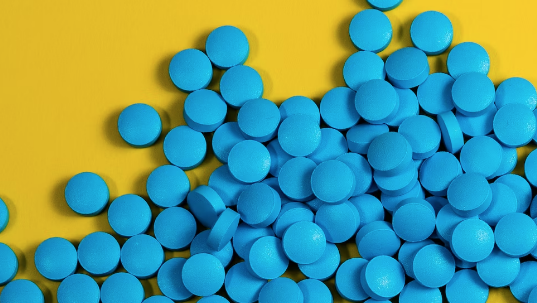
Recent studies have cast a spotlight on the roles of Peyronie’s disease, Viagra, and Cialis (tadalafil) as viable options for addressing its complex symptoms.
These medications, along with their counterparts, have demonstrated promising results in terms of pain management, reducing penile curvature, and enhancing erectile function.

When it comes to managing Peyronie’s disease (PD), there is an ongoing search for effective treatment options.
Recent studies have shed light on the potential of two well-known medications, Viagra (sildenafil) and Cialis (tadalafil), in addressing this condition.
Tadalafil as a Promising Option
A study conducted by Hyun Jun Park, MD, PhD, and Nam Cheol Park, MD, PhD, from Pusan National University School of Medicine in Busan, Korea, has explored the potential benefits of tadalafil in Peyronie’s disease treatment. The researchers divided 66 PD patients into three groups:
- Group 1: This group consisted of 20 patients who received intralesional injections of verapamil (IVI).
- Group 2: Comprising 23 patients, this group was treated with a daily dose of tadalafil at 5 mg for a duration of 12 weeks.
- Group 3: A total of 23 patients were included in this group, where they received both IVI and tadalafil 5 mg daily for 12 weeks.
Remarkably, the patients in these groups were similar in terms of age, erectile function, and PD characteristics.
After 12 weeks of treatment, the study reported the following results:
- Pain resolution was achieved in 55% of Group 1, 70% of Group 2, and a significant 78.3% of Group 3.
- The degree of penile curvature showed positive changes, with improvements of -4.6, -6.2, and -7.2 degrees in Groups 1, 2, and 3, respectively.
- The mean plaque size experienced reductions of 0.2, 0.2, and 0.3 cm² in these respective groups.
Moreover, groups 2 and 3 exhibited more significant improvements in their International Index of Erectile Function (IIEF)-Erectile Function domain scores compared to Group 1 (3.8 and 3.8 vs. 0.4, respectively).
Viagra and Tadalafil For Peyronie’s Disease: A Comparison
Tadalafil, often referred to as Cialis, is not the only phosphodiesterase type 5 (PDE5) inhibitor used in addressing sexual health issues.
Other similar medications include sildenafil (marketed as Viagra), vardenafil (marketed as Levitra), and avanafil (marketed as Stendra).
These drugs share a common mechanism of action, facilitating increased blood flow to the penis, resulting in stronger and more prolonged erections.
However, tadalafil stands out due to its prolonged duration of action. It’s often dubbed ‘the weekend pill’ because it can provide relief for up to 36 hours after consumption.
This extended window of effectiveness grants individuals greater flexibility in planning their sexual activities, making tadalafil a preferred choice for those seeking spontaneity in managing their sexual health.
Prior Research on Tadalafil for Peyronie’s Disease
The current study is not the first to explore the potential of tadalafil in Peyronie’s disease management. In a previous paper published in Urology Annals (2015), Lucio Dell’Atti, MD, from the University Hospital S. Anna in Ferrara, Italy, reported promising results of combined treatment involving tadalafil and IVI in comparison to IVI or tadalafil alone.
In Dell’Atti’s study, which involved 59 Peyronie’s disease patients divided into three groups:
- Group A: Consisting of 23 patients treated with IVI.
- Group B: Comprising 19 patients treated with tadalafil 5 mg daily for 12 weeks.
- Group C: Including 17 patients treated with both IVI and tadalafil 5 mg daily for 12 weeks.
At the study’s outset, these groups had mean IIEF-5 scores of 12.90, 12.51, and 11.58, respectively.
Over the course of 12 weeks, the results were as follows:
- Pain was completely resolved in 57% of patients in Group A, 61% in Group B, and an impressive 76% in Group C.
- The mean curvature degree decreased in all groups, with no significant differences among them.
- The plaque size did not significantly decrease in Groups A and B but decreased significantly in Group C.
- The IIEF-5 score improved significantly in Group C compared to Groups A and B (23.1 vs. 14.4 and 18.2, respectively).
These findings underscore the potential of tadalafil, as well as its counterparts, in addressing the complex issue of Peyronie’s disease.
In conclusion, Peyronie’s disease remains a condition in search of effective treatments, and recent studies suggest that tadalafil (Cialis) may hold promise in alleviating its symptoms.
Tadalafil, along with similar medications like Viagra, presents potential options for individuals grappling with this challenging condition, offering the prospect of improved pain management, reduced penile curvature, and enhanced erectile function.
For personalized guidance and treatment options, it’s essential to consult with a healthcare provider.

Side Effects Of Viagra For Peyronie’s Disease:
Common side effects:
- Dizziness
- Headaches
- Flushing
- Upset stomach
- Vision changes, including sensitivity to light, blurred vision, and difficulty distinguishing between blue and green colors
Rare side effects:
- Fainting
- Nausea
- Vision loss
- Allergic reactions
- Hearing loss or ringing in the ears
- Prolonged erection lasting more than four hours
Side Effects Of Cialis For Peyronie’s Disease:
Common side effects (shared with Viagra):
- Dizziness
- Headaches
- Flushing
- Upset stomach
- Vision changes, including sensitivity to light, blurred vision, and difficulty distinguishing between blue and green colors
Additionally, Cialis may have its own set of side effects, including:
- Back pain
- Muscle aches
- Nasal congestion
- Indigestion
- Reflux
- Low blood pressure
Reference: Park HJ, Park NC. “Daily Tadalafil Therapy: A New Treatment Option for Peyronie’s Disease?” Presented in poster format at the 18th Annual Fall Scientific Meeting of the Sexual Medicine Society of North America in San Antonio, Texas

